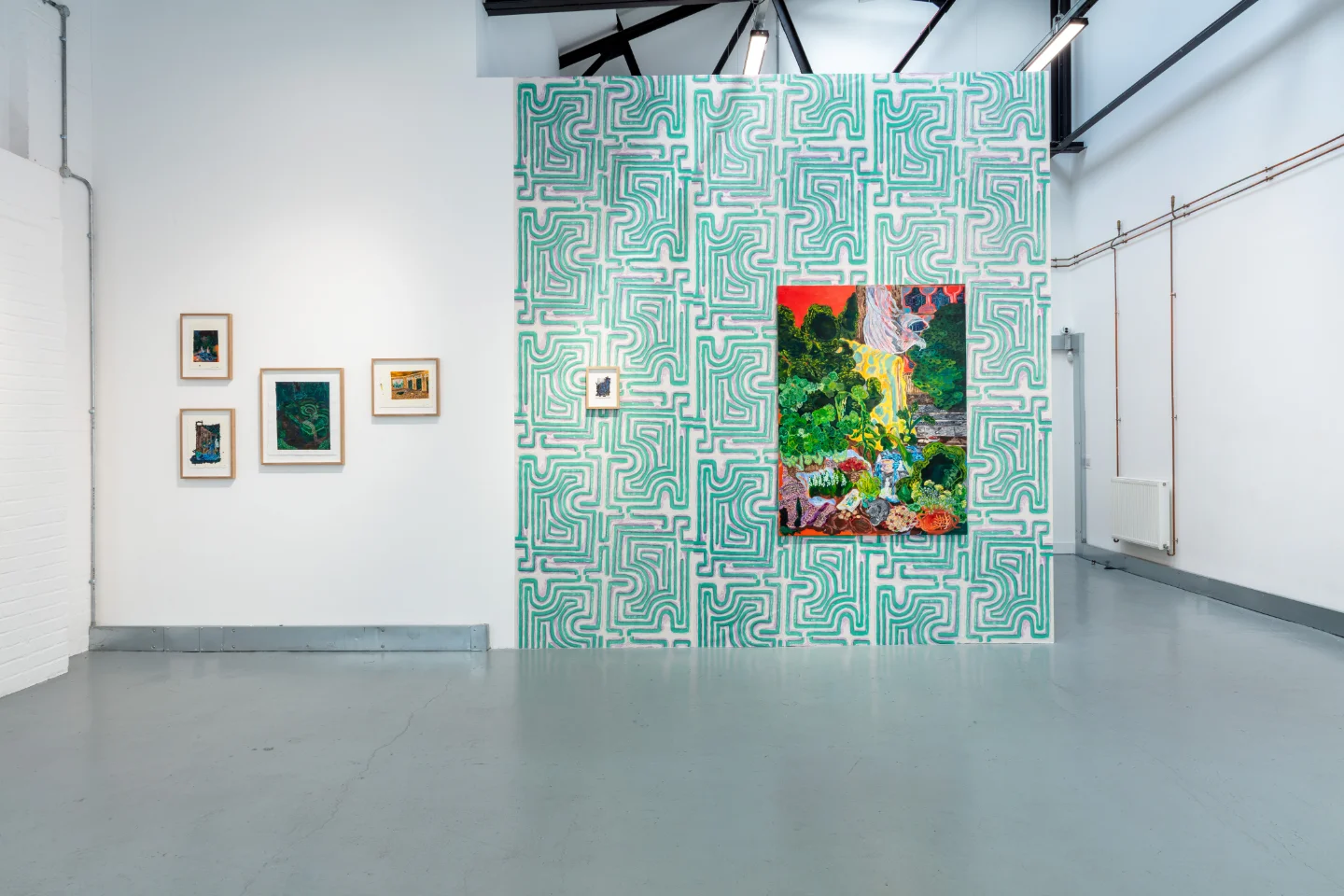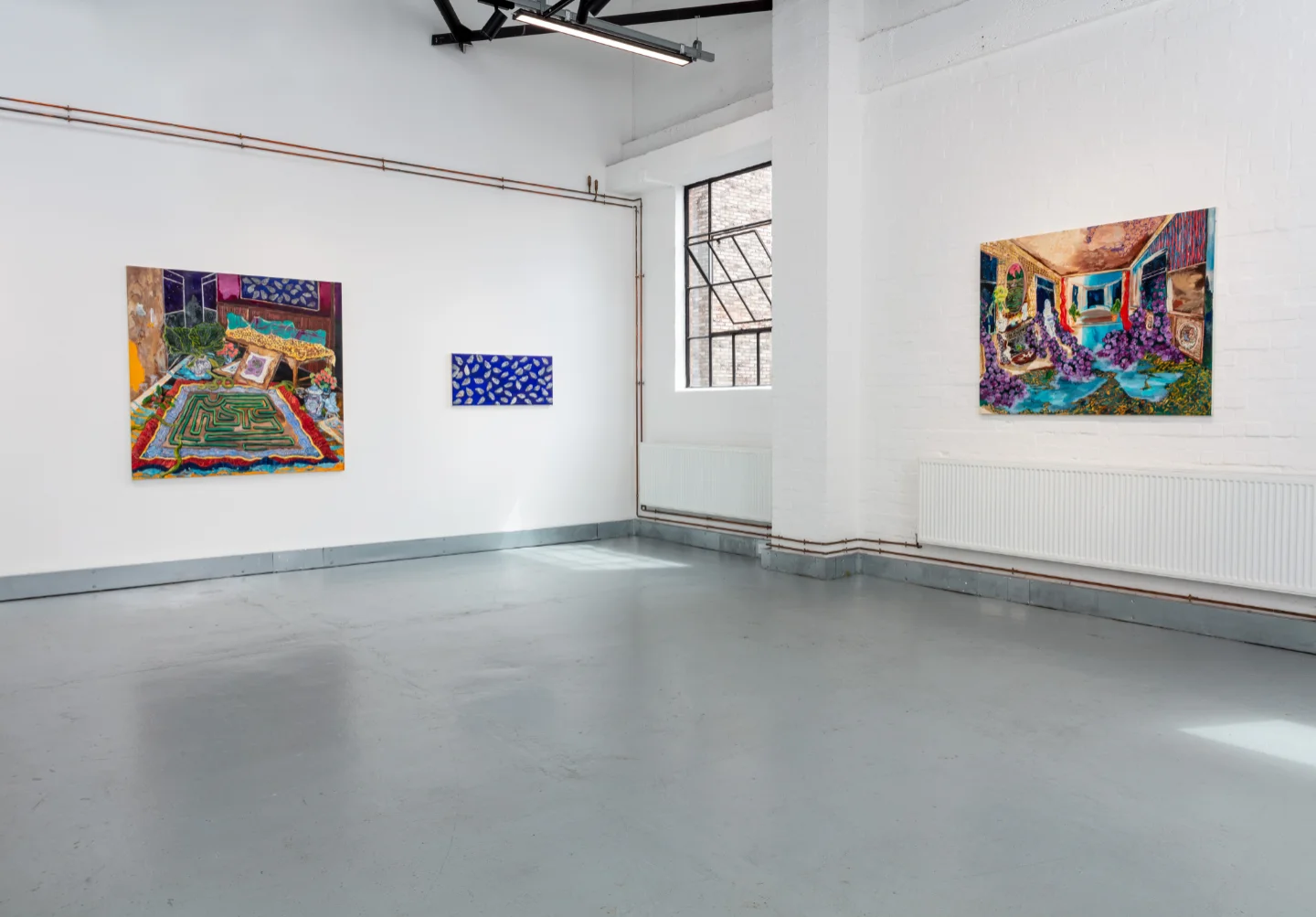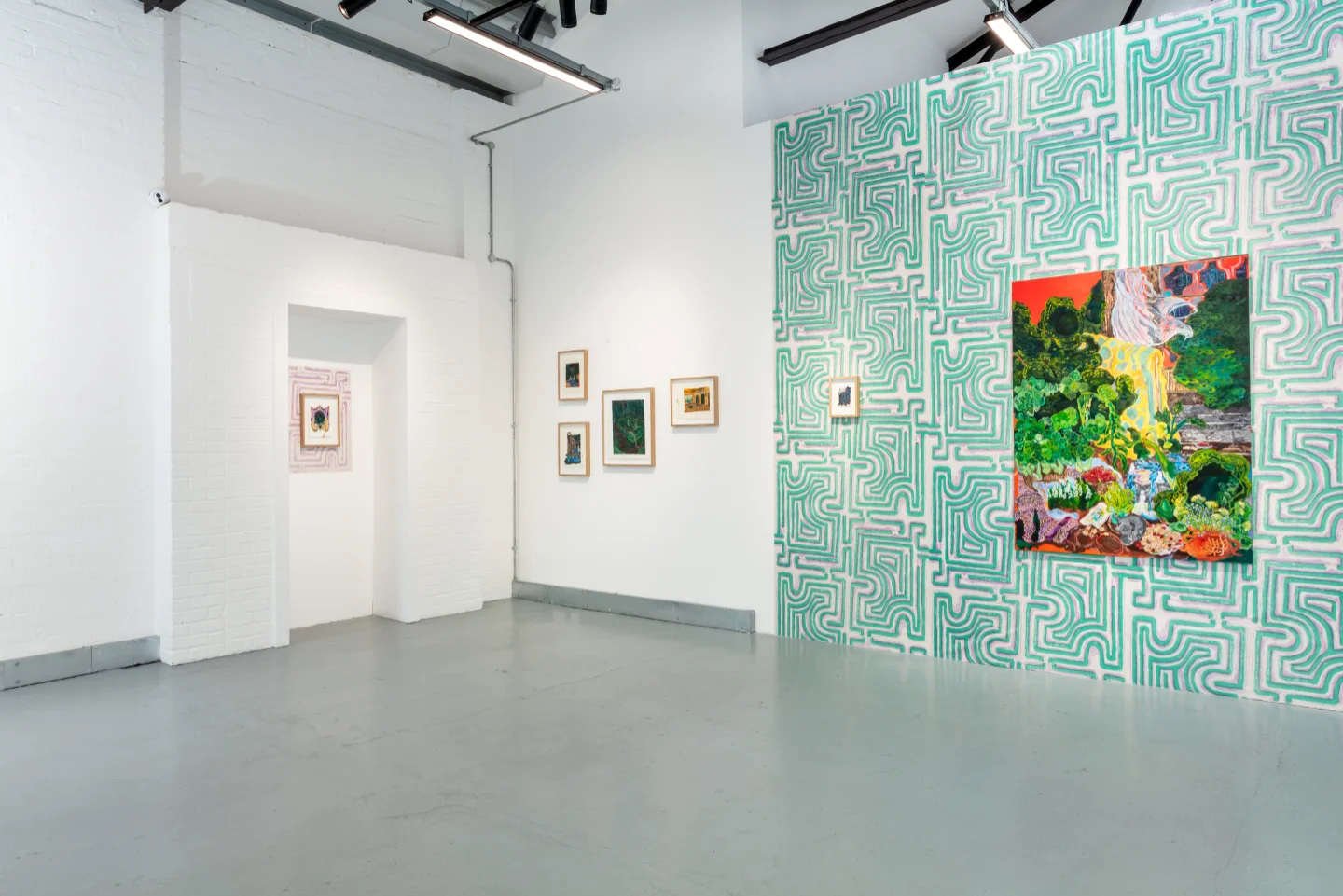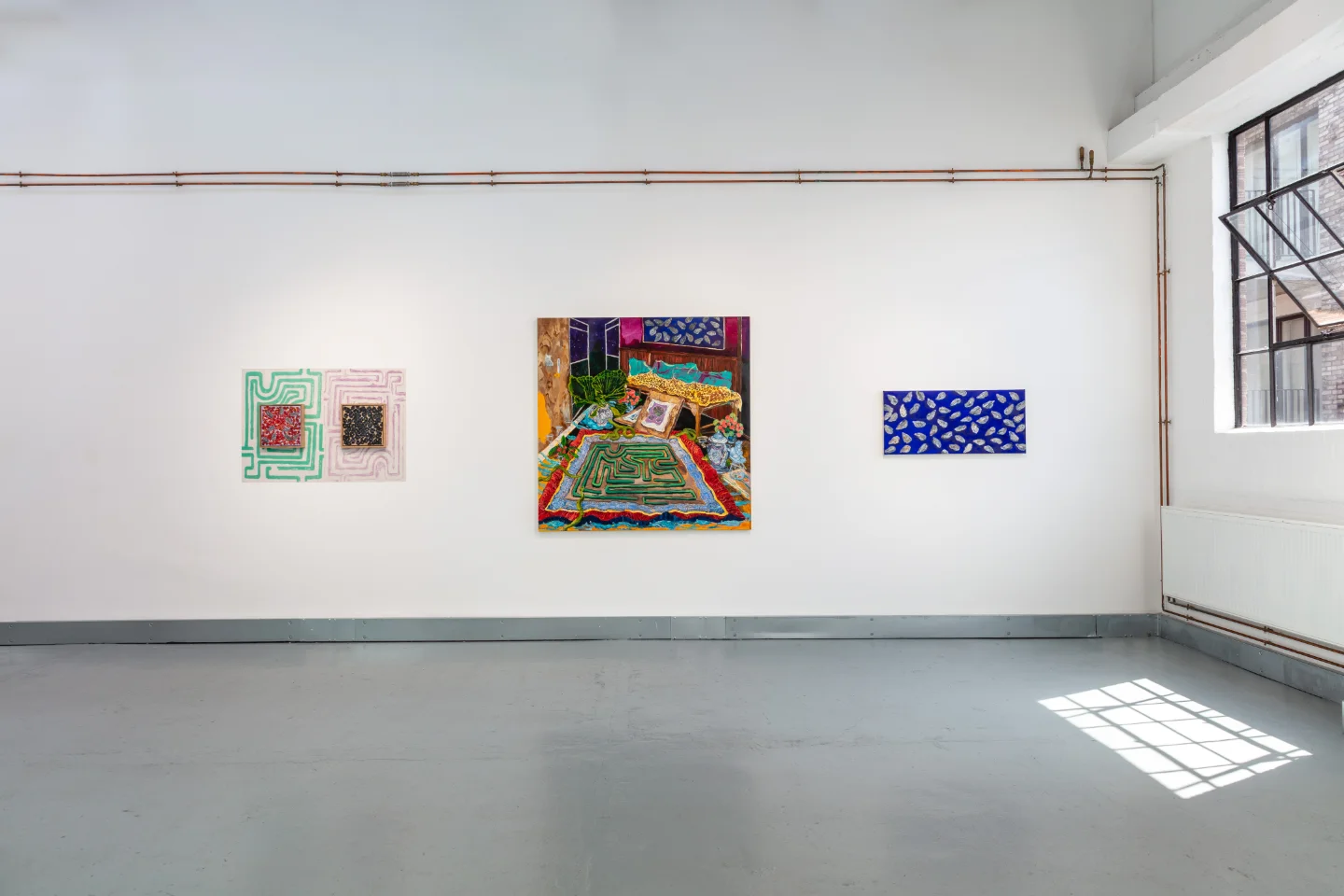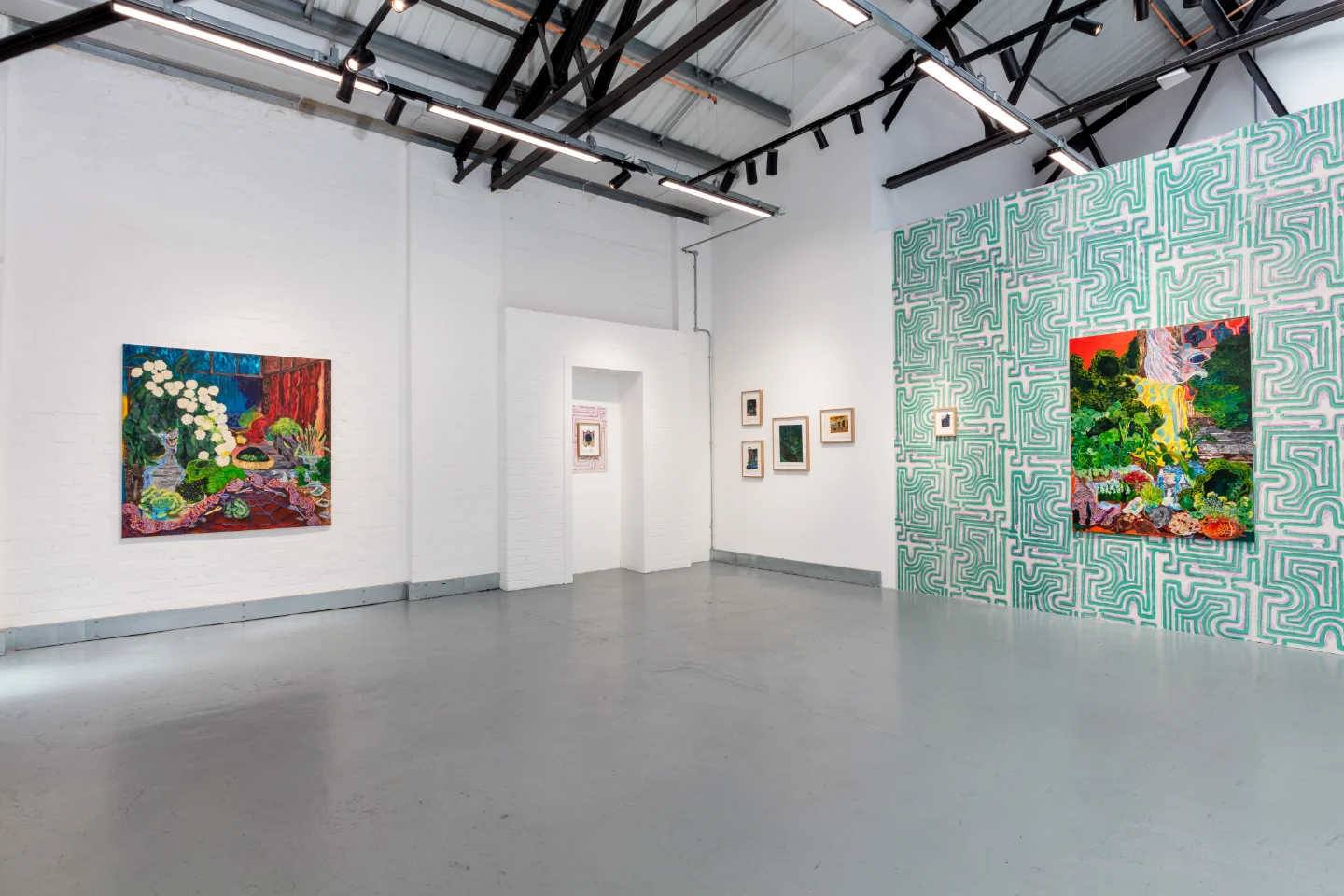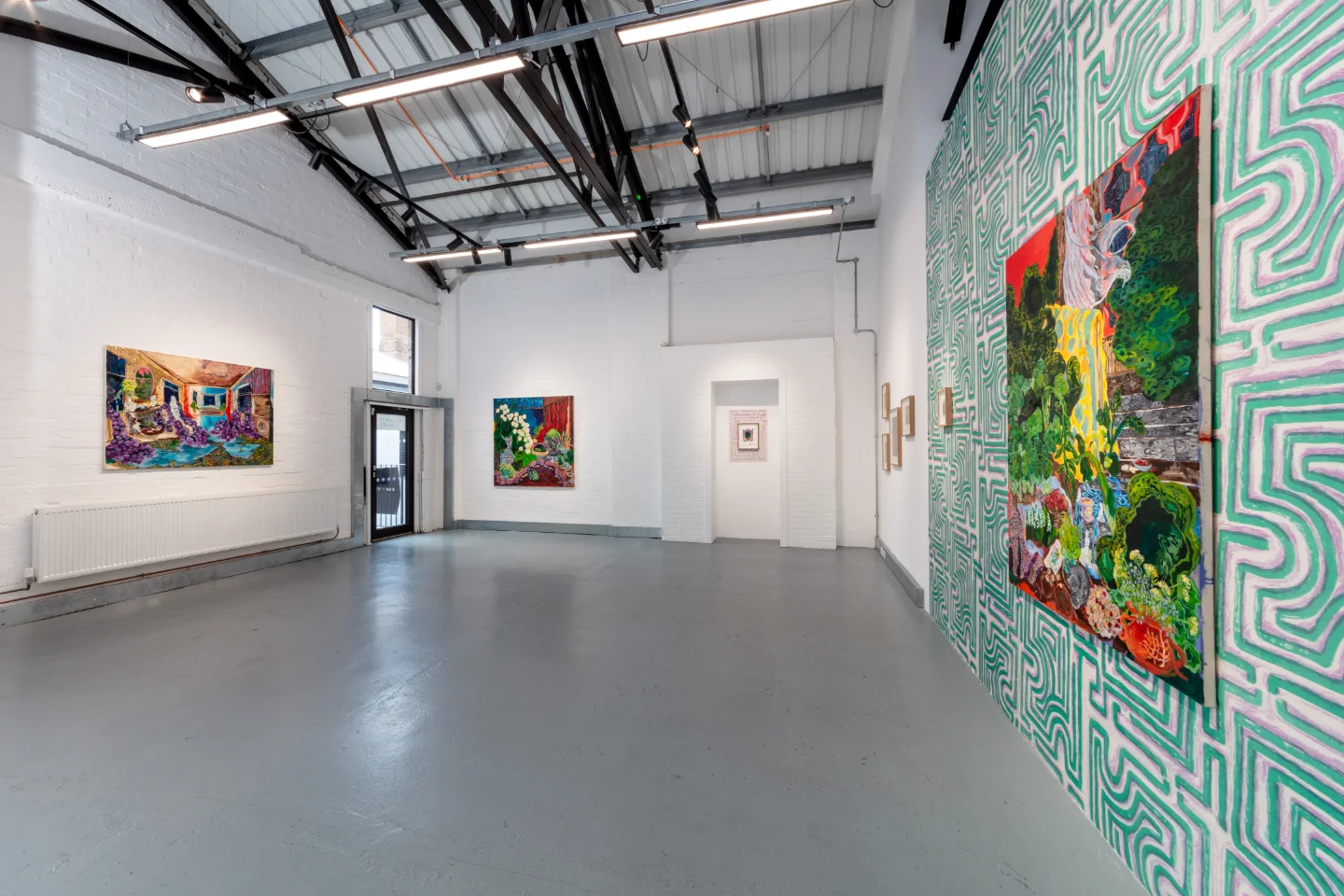Elizabeth Xi Bauer Presents:
Karoliina Hellberg
Labyrinth
7th June – 3rd August 2024
Private View: 6th June 2024, 6 – 8pm
Curated by Maria do Carmo M. P. de Pontes
Curatorial Text
Flowers are invariably to be found around Karoliina Hellberg’s house, scattered in pots, planters and vases through all stages of their perennial existence. They are present in her studio as muses who shift seasonally, taking turns to make an entrance into her paintings – and sometimes, to the paintings within her paintings. They inform the way she breathes and even the way she stretches or combs her hair. In her private glossary, they each stand for a different mindset; there are flowers to grieve, flowers to cheer and flowers to read. They are the element that runs through all the works on show in Labyrinth – and, indeed, through the majority of her oeuvre.
The magical realism permeating Hellberg’s work is accentuated by the abundance of flora that she places in indoor settings. Were this flora not tamed and neatly manicured, suggesting but never depicting humankind, one could take her paintings for portraits of a future where plants have taken over the ruins of humanity. This triumph of nature is exaggerated in paintings such as You keep coming back in, where an enormous amount of hydrangeas flow towards a living room from all its windows. A water leak in the back wall of the room creates large puddles on the floor, heightening the inclemency of nature. A labyrinth can be seen inside an oval painting hung over a mantlepiece.
In the painting that titles the show, a seemingly-magical rug is surrounded by a variety of flora: peonies, poppies and enormous green leaves. In the centre of this rug lies a labyrinth, which is eagerly observed from all sides by a cohort of snakes – noteworthy, another recurring motif within Hellberg’s compositions. Whether or not this labyrinth has volume – like an indoor garden maze – remains ambiguous due to the artist’s Matisse-influenced style of flattening objects, which overall tricks the viewer’s gaze into taking the background for foreground and vice-versa. This technique further enables Hellberg to compose with an ensemble cast, where notions of protagonists and supporting actors are often for the viewer to decide, depending on where they first lay their eyes.
In recent months, the artist grew increasingly fascinated by labyrinths and mazes. They conceptually embody the friction between the natural and the created, which seems to inspire a large part of her work. In practical terms, Hellberg sees their depiction as a challenge, as she tries to understand their intricate mechanisms by drawing them again and again. The starting point for most of her labyrinths is vintage books collected from a specialised bookshop – unlike her flowers, which are painted in the flesh. Labyrinths are the protagonists of a wallpaper created especially for this exhibition by the artist. They also act as a backdrop to some of her other compositions. Noteworthy, her wallpaper is inspired by the work of the great Marc Camille Chaimowicz, who died just weeks before the opening of this show. This logic of repeating the same motif in order to create a pattern is also seen in the smaller paintings on display, depicting flowers and oysters.
Yet another common thread among the works in Labyrinth is their shared palette. Colour is essentially light, and few places like Finland, where she lives and works, have such a dramatic change of light throughout the seasons: from the joyful midnight sun in the warm months to the encompassing darkness of winter. All the paintings on show were produced earlier in 2024, that is, during the lingering cold of winter and early spring. In their majority, however, they allude to summer nights as a nostalgic longing. The Raspberry basket, for instance, nods to summer both in its lusciousness – a red sky, an exuberant flora, a white dress partially flying in the wind – and in its title, as the raspberry season in Europe coincides with summer.
A less celebrated but somehow more romantic aspect of the warm season, rain, is featured prominently in Black pensées and dill (rainy sea). In fact, water operates as a sort of catalyst among the paintings, presented in one form or another throughout them. Rather than alluding to a gloomy mood, the black in the title seems to address the colour of the violets’ arrangement that adorns the bottom left of the canvas, just below a veil of white hydrangeas and some large monstera deliciosa leaves.
All these recurrences of motifs, colours and settings create a sense of harmony or continuity among the works. They are not exactly part of a series but rather of the same universe – or, in the artist’s words, chapters of the same book. The narrative of Labyrinth is completed by the presence of various drawings that punctuate the larger paintings. Through her practice, Hellberg switches her attention to drawing when she feels the need to experiment more freely with the brush in order to try a composition or a figure on a smaller scale. This does not mean that they are less important works; quite the contrary, the watercolour allows her a richness of details that is hard to achieve with oil or acrylic paint. When it comes to her paintings, it is curious to notice that she creates them with both acrylic and oil paint, a rare combination as painters often opts for one or another. By treating both kinds of paint, and indeed all classes of drawing materials, with the same affection, she rejects antiquated notions, stating that an oil painting is superior to an acrylic one, and both sit above drawings. Medias and flowers alike, all things are welcome and treasured in Karoliina Hellberg’s universe.
We thank The Arts Promotion Centre Finland (Taike) and The Alfred Kordelin Foundation for supporting this exhibition and the artist’s practice.
Karoliina Hellberg was born in 1987 in Porvoo, Finland, and lives and works in Helsinki. In 2018, the artist was awarded the prestigious Pro Arte award from Didrichsen Art Museum. Hellberg’s work has been exhibited at Didrichsen Art Museum, Helsinki Art Museum, Kiasma Contemporary Art Museum, Kuopio Art Museum and Amos Rex Museum, amongst many others. Her artworks exist in major foundations and institutions such as Helsinki Art Museum, The Academy of Fine Arts Collection Helsinki, Museum of Contemporary Art Kiasma, Saastamoinen Foundation, Didrichsen Art Museum and Hämeenlinna Art Museum.
This exhibition will run from 7th June to 3rd August 2024, Wednesday to Saturday, 12-6 pm or by appointment.
Elizabeth Xi Bauer Gallery
Fuel Tank, 8-12 Creekside
London SE8 3DX
020 3048 5220
contact@lizxib.com
